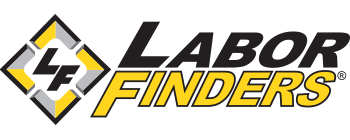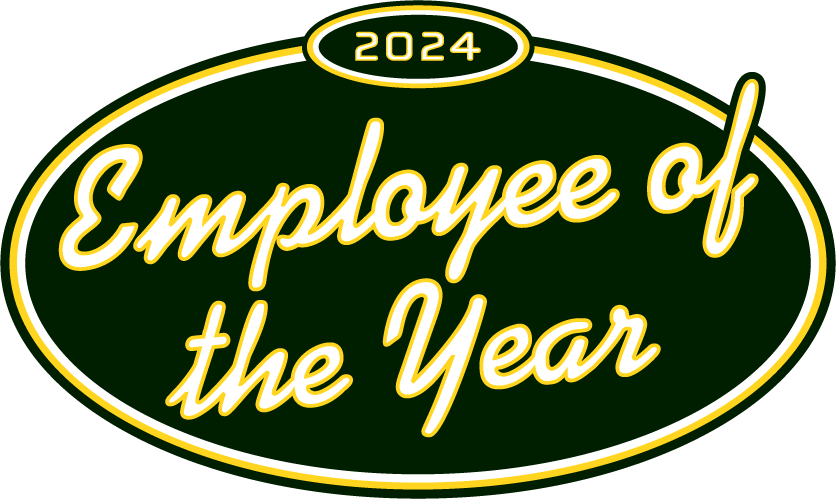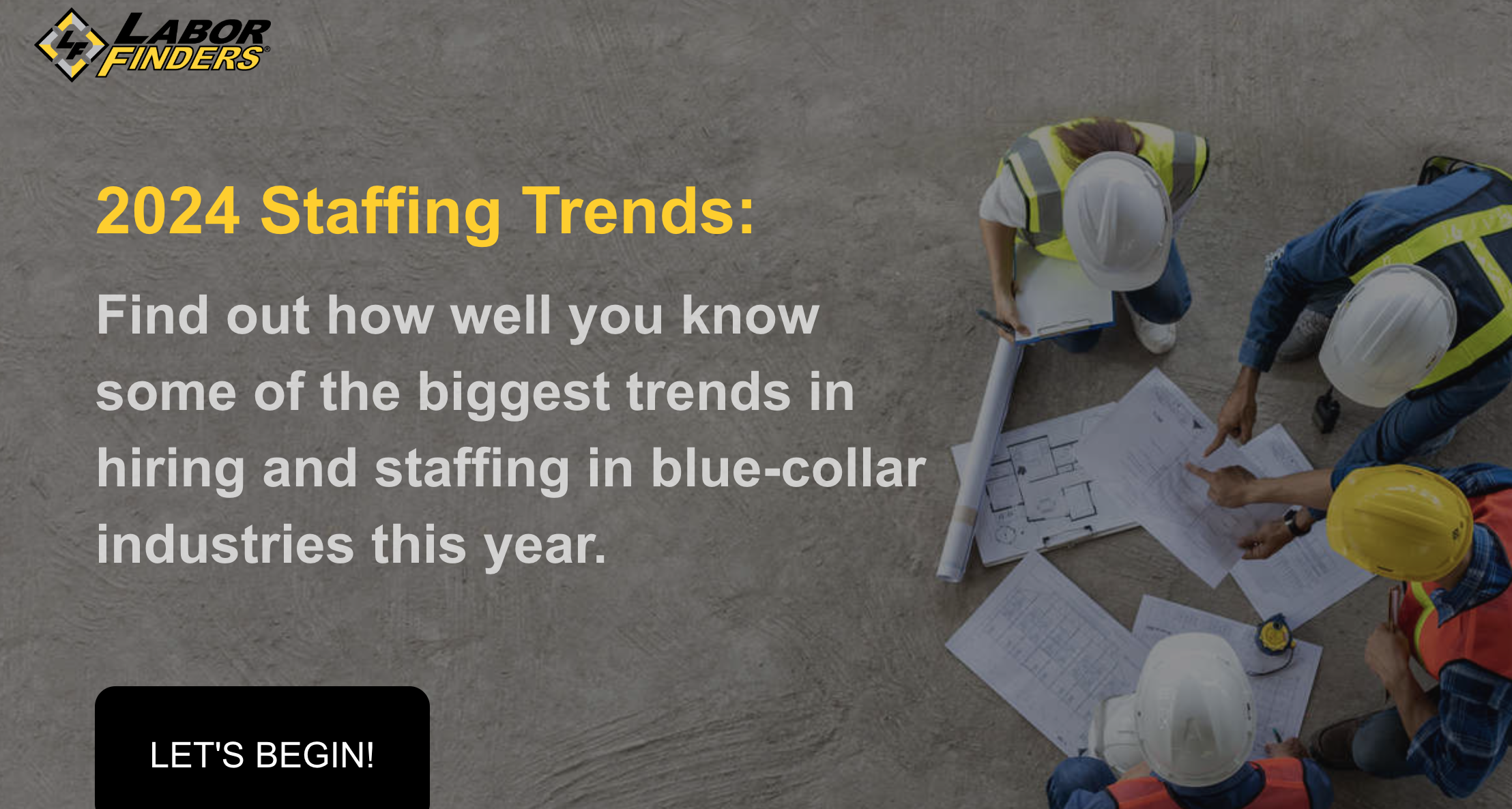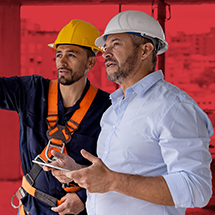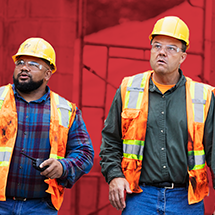-
Job Seekers
X
Job Seekers
Whether you're looking for a temp job or a permanent career, Labor Finders has you covered!
-
Explore
- How it works
- Industries
- Blog
- Locations
- Job Search
You May Also Be Interested In

2024 Employee of the Year
Learn more about our amazing Employee of the Year
-
-
Employers
X
Employers
Let us help you find the workers you need, when you need them.
You May Also Be Interested In

2024 Staffing Trends Quiz
Construction Staffing Trends Quiz
-
Industries
X
Employer Industries
Ready to staff your next project? Our staffing experts has the knowledge and the workers to cater to your unique staffing needs.
In this Section:
Job Seeker Industries
From construction to waste management, we have job openings in whatever industry you’re interested in.
In this Section:
-
About
X
About You
Getting matched to the right job, gaining the flexibility you want, making an impact in your community - at Labor Finders, it’s all about you!
-
You may also be interested in
- About Us
- Job Search Results
- Find an Office
- How it works
- Blog
About Us
With almost 200 offices nationwide, we’ve been putting people back to work for over 40 years. See why we’re a leader in the blue-collar staffing industry.
-
You may also be interested in
- About Us
- Media Center
- Video Library
- Leadership Team
- Careers
- In The Community
- History
-
- Location
Safety
Are You Using the Right Eye Protection For Your Welding Work?
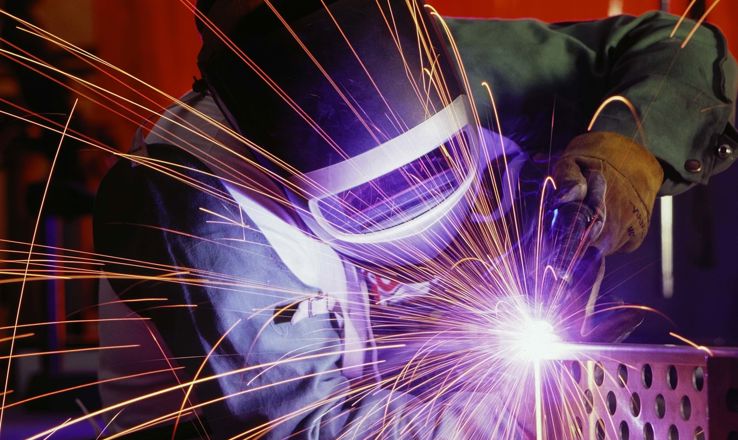
According to US government agencies there are approximately 2,000 eye injuries on the job each day due to not wearing any type of eye safety equipment or wearing the wrong kind needed to do the job. In the case of welding, most of these injuries are caused by arc and heat rays and flying debris like dirt and metal. To avoid injury or blindness on the job it's not enough to just wear eye goggles, face protectors and welding helmets, you must make sure you’re wearing the right ones. The American National Standard Practice for Occupational and Educational Eye and Face Protection lays out the safety requirements that all welding eye protection equipment should abide by (known as ANSI Z87.1) and addresses these three things you need to look for in your welding equipment.
The Correct Lens Color
While flying debris is a major safety concern, your eyes must also be protected from workplace dangers like radiation, strain and fatigue. Wearing goggles, shields, or helmets that have the correct lens color for the welding work you’re doing can prevent these types of injuries. For example, a clear shade works well for general indoor work where impact protection is required. Gold, blue and silver mirror shades protect eyes from glaring sunlight by reflecting and reducing the amount of light that comes through. For low light work, use amber-colored safety glasses or goggles.
The Correct Filter Shades
In addition to lens color, protective eyewear should also have the correct filter shade number to protect eyes, particularly from radiation. Lenses with the low shade numbers like 1.5 are ideal for torch soldering welding. Those with higher filter shade numbers like 15 should be used for electric arc welding. In general, the higher the number, the less radiation that will pass through your welding eyewear.
The Right Fit for Welding
Lens color and filter shades won’t mean much if the eye-protective wear itself doesn’t fit properly. Make sure the safety glasses you choose sit firmly on the top of your nose and won’t slide off due to sweat. They should also be close to your face. If they’re too tight, it will create large gaps at the corners leaving you susceptible to injury. Be sure that the glasses don’t touch the bridge of your nose or behind each ear (known as a three-point fit). As for helmets, make sure the fit is snug enough that it will stay on whether it’s pulled up or down.
If you’re looking for your next welding job, Labor Finders has you covered! Click here to find open positions near you.

